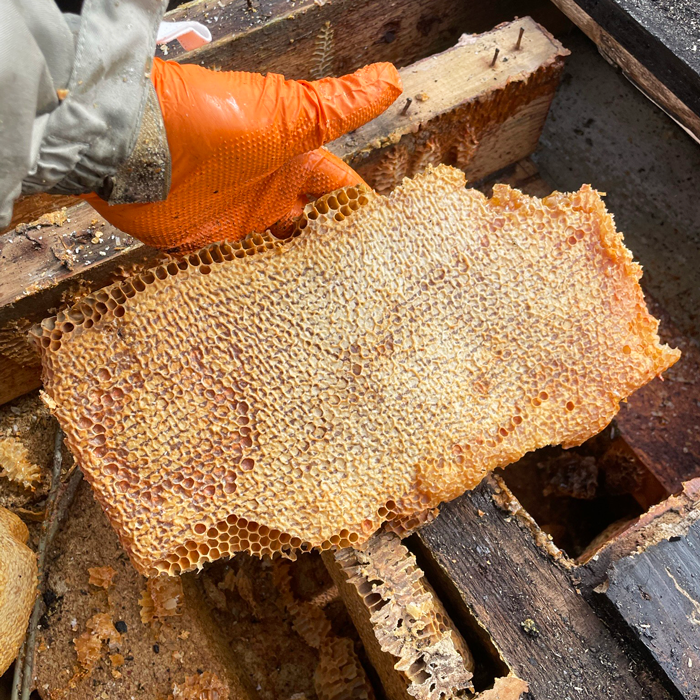Are you looking someone to remove Honey bees from a wall?
SafeHands Pest Management can help, our specialist Honey bee removal team will remove & relocate live Honey bee colonies safely & ethically, anywhere across Northern Ireland.
Enter your telephone number below to request a call back:

SAFEHANDS PEST MANAGEMENT
Do you have Honey bees living in your wall?
A more common location for Honey bees to colonise would be behind wooden cladding walls or cladding features of a building. These wooden features of a building don’t usually be insulated, allowing the honey bee space to set up.
In some rare cases, we have had to remove Honey bee colonies from block cavity walls above the properties ceiling level. This was due to no insulation being installed in this section of the cavity wall.
Permanent solution
Our highly experienced team is capable of carrying out Honey bee removals with a permanent solution, assuring the honey bees won't return to the same location of the property.
Protecting Honey bees
Our goal is to provide our clients with environmentally friendly solution, which benefits both our clients and the honey bees.
Complete job management
Our trained and dedicated team allows us to offer the complete package from the Honey bee removal to any reinstatement work that may be required.
Trained & dedicated team members
Our team members include experienced beekeepers and several construction trades, allowing us to offer reinstatement work as a complete package.
THE REMOVAL PROCESS
The process to successfully remove Honey bees from walls
The removal process of Honey bees from within a wall usually involves removing either brick, block or wooden sections of cladding to access the honey bees. In some cases if these sections of the wall are removed and not properly supported, this can be extremely dangerous as the structure of the building has been weakened.
Site Survey
The first step in the Honey bee removal process is for us to carry out a site survey to confirm the location of the Honey bees.
Access Equipment
This survey is also to confirm what access equipment may be required to access the location of the Honey bees.
Risk Assessment
We also conduct a full and thorough risk assessment to manage any risks that are present adhering to health & safety legislation.
Recommendations & Quote
Once the site survey has been completed we can provide our clients with our recommendations and a quote to successfully remove the Honey bees.
Request a Site Survey
The first step in the honey bee removal process is for us to carry out a site survey. To request a site survey please fill in the form:
We would love to speak with you.
Feel free to reach out using the contact form.
FAQ
Are Honey bees protected in Northern Ireland?
Honey bees are not a legally protected species in Northern Ireland.
What insecticides are improved for the control of honey bees?
There is no insecticide on the UK market that states “Approved for the control of honey bees” on the products label.
Do honey bees naturally die out during the winter?
Honey bee colonies do not usually die out during the winter months.
What advantages does the live honey bee removal process provide?
This process provides a permeant environmental friendly solution, allowing us to remove the honeybees and the comb.
Why does the comb the honeybees build need to be removed from the location?
The comb is one of the most vital resources honey bees have. If the comb is left in situ, it’s likely this will attract a new honey bee swarm back into this location.
How can the honeybees be prevented from returning?
Over the years we have developed different techniques and insect proofing methods to deny honey bees the ability to return the same location.
Will my home insurance cover the costs of the removal?
Although some insurance providers do cover the removal costs involved, most providers do not.
What happens the honey bees once removed?
The honey bees are put into a wooden hive and moved to more suitable land and managed by a beekeeper.
